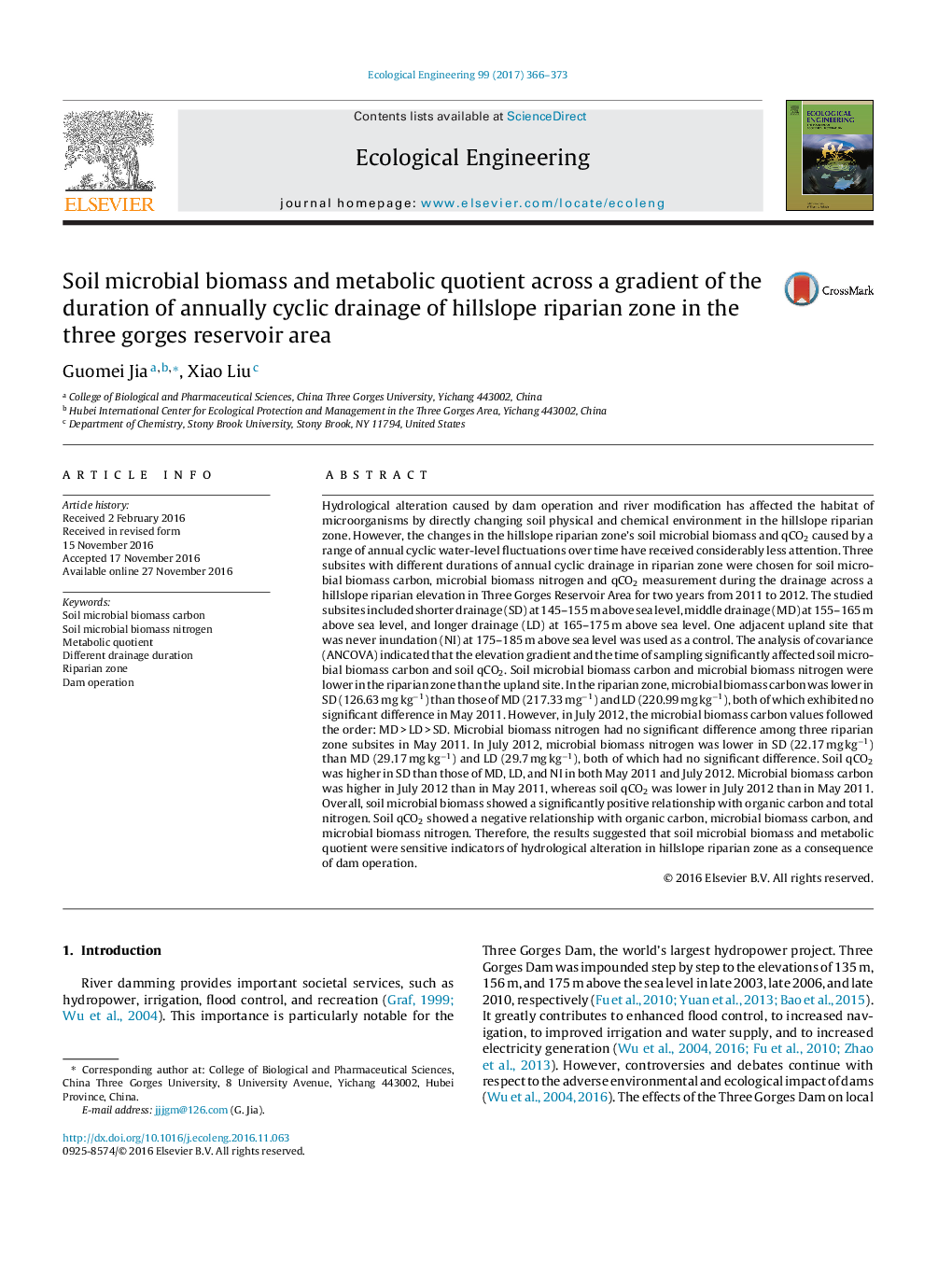| Article ID | Journal | Published Year | Pages | File Type |
|---|---|---|---|---|
| 5744005 | Ecological Engineering | 2017 | 8 Pages |
â¢Soil microbial biomass and qCO2 were studied at different flooding duration.â¢Microbial biomass carbon and qCO2 was affected by both flooding duration and time.â¢Different flooding durations decreased differently soil microbial biomass.â¢The changes in microbial biomass and qCO2 were related to the production of plant.
Hydrological alteration caused by dam operation and river modification has affected the habitat of microorganisms by directly changing soil physical and chemical environment in the hillslope riparian zone. However, the changes in the hillslope riparian zone's soil microbial biomass and qCO2 caused by a range of annual cyclic water-level fluctuations over time have received considerably less attention. Three subsites with different durations of annual cyclic drainage in riparian zone were chosen for soil microbial biomass carbon, microbial biomass nitrogen and qCO2 measurement during the drainage across a hillslope riparian elevation in Three Gorges Reservoir Area for two years from 2011 to 2012. The studied subsites included shorter drainage (SD) at 145-155 m above sea level, middle drainage (MD) at 155-165 m above sea level, and longer drainage (LD) at 165-175 m above sea level. One adjacent upland site that was never inundation (NI) at 175-185 m above sea level was used as a control. The analysis of covariance (ANCOVA) indicated that the elevation gradient and the time of sampling significantly affected soil microbial biomass carbon and soil qCO2. Soil microbial biomass carbon and microbial biomass nitrogen were lower in the riparian zone than the upland site. In the riparian zone, microbial biomass carbon was lower in SD (126.63 mg kgâ1) than those of MD (217.33 mgâ1) and LD (220.99 mg kgâ1), both of which exhibited no significant difference in May 2011. However, in July 2012, the microbial biomass carbon values followed the order: MD > LD > SD. Microbial biomass nitrogen had no significant difference among three riparian zone subsites in May 2011. In July 2012, microbial biomass nitrogen was lower in SD (22.17 mg kgâ1) than MD (29.17 mg kgâ1) and LD (29.7 mg kgâ1), both of which had no significant difference. Soil qCO2 was higher in SD than those of MD, LD, and NI in both May 2011 and July 2012. Microbial biomass carbon was higher in July 2012 than in May 2011, whereas soil qCO2 was lower in July 2012 than in May 2011. Overall, soil microbial biomass showed a significantly positive relationship with organic carbon and total nitrogen. Soil qCO2 showed a negative relationship with organic carbon, microbial biomass carbon, and microbial biomass nitrogen. Therefore, the results suggested that soil microbial biomass and metabolic quotient were sensitive indicators of hydrological alteration in hillslope riparian zone as a consequence of dam operation.
